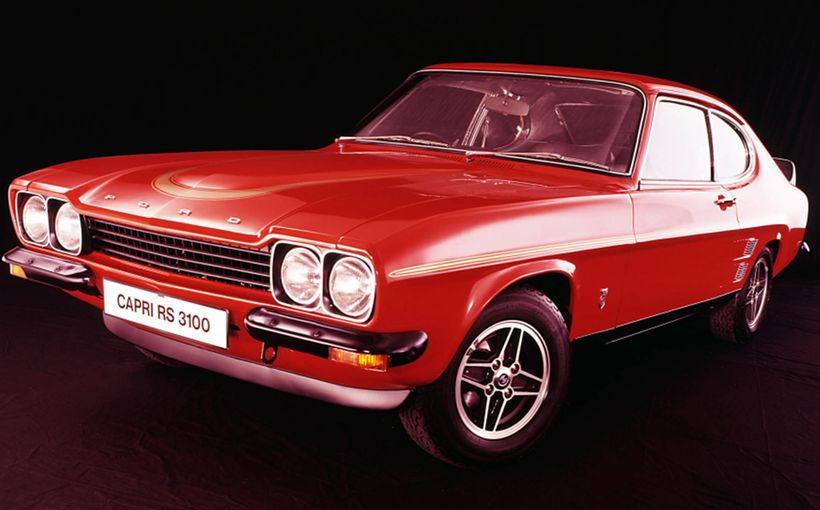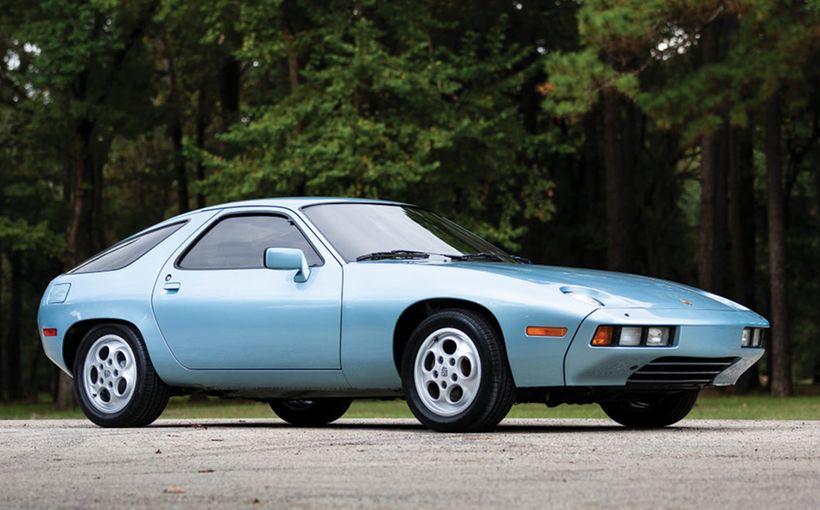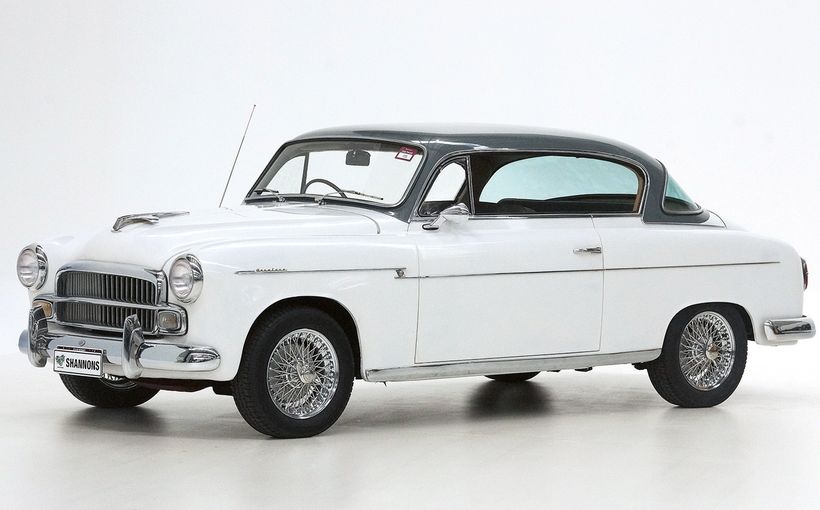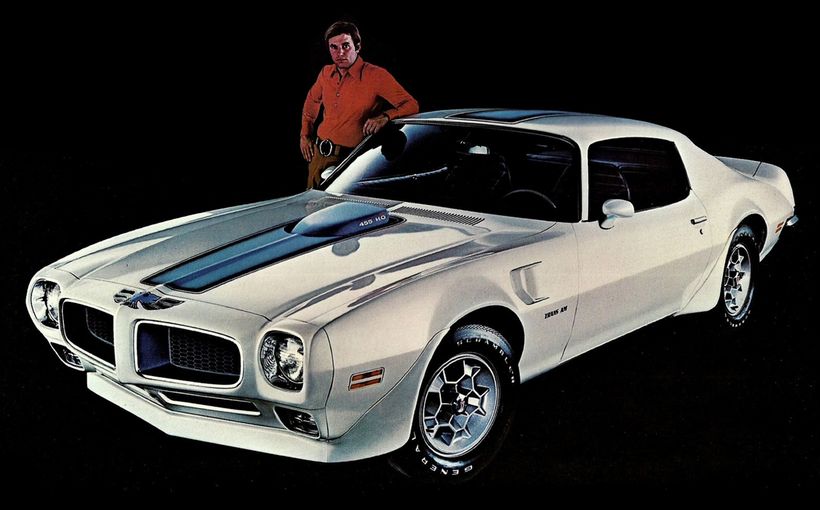Austin-Healey Sprite and MG Midget: badge-engineered Brits born to race

“It has been said, and justifiably, that the Sprite and Midget as produced by the MG Car Company from 1958 until 1979, provided motoring enthusiasts with by far the most amount of enjoyment for by far the least amount of money,” boasts the MG Car Club.
“One of the most versatile sports cars ever, owners were within days of its announcement competing successfully with them in all branches of motor sport and have continued doing so ever since. Equally at home whether being used for racing, rallying, hillclimbing, sprinting, trialling or auto-testing, these diminutive machines were and are truly competitive and in talented hands always capable of some giant-slaying results.
“A joy to drive, easy and inexpensive to buy and repair, these little machines represent the ultimate enthusiast’s all-rounder. A true ‘sports car’ in every sense of the word.”
The MGCC should know, given that it’s an international club founded in 1930. Today, with its UK club headquarters at Abingdon in Oxfordshire, adjacent to the former MG factory site which also housed BMC’s competitions department, it boasts more than 55,000 members around the world.

That includes Australia of course, where the Austin-Healey Sprite and MG Midget are revered by local enthusiasts, be they amateur weekend racers or top guns like Bob Skelton who in the 1960s excelled in a giant-killing MG Midget factory lightweight which you’ll read more about in this story.
Needless to say, there’s a lot of affection and respect for the famous octagon badge, none more so than the Austin-Healey Sprite and its MG Midget twin, or ‘Spridgets’ as they are commonly known.
These cars were prolific and successful in numerous motor sport disciplines worldwide including class wins in classic endurance sports car races at Sebring and Le Mans, countless divisional and national championships in Sports Car Club of America (SCCA) competition and class victories in famous rallies like the RAC, Alpine and Monte Carlo.
And even today, decades after production ceased, these much-loved classics are still active in Historic racing and numerous other low-cost classes, with the emphasis still on achieving the most amount of enjoyment for the least amount of money.

Austin Healey Sprite
The original Sprite, released in 1958, was the result of a joint venture between the Donald Healey Motor Company which designed it and the MG Car Company which built it. Series production took place at MG’s Abingdon factory which since 1952, following the merger between Morris and Austin, was under BMC ownership.
The Sprite’s stylist Gerry Coker had originally planned for the prominent head lights - which earned the nickname ‘frog-eye’ or ‘bug-eye’ - to retract and sit flush with the body when not in use. However, with simplicity and low cost being top priorities, the light pods were mounted in a fixed position. From a racer’s viewpoint this was not ideal in terms of aerodynamic drag, but speeds in competition were generally not high enough for it to be a problem.
Healey’s chassis engineer Barry Bilbie drew motor sport inspiration from Jaguar’s Le Mans-winning D-type in using light but strong unitary construction, in which the rear suspension was attached directly to a single skin body structure or ‘monocoque’. The absence of a boot lid added to its rigidity, which was important in coping with suspension loads and torsional flex. This aircraft fuselage-inspired design also resulted in a big weight saving over a traditional body-on-frame and was a huge step forward in 1950s British sports car design.
The need to minimise costs also required use of as many existing BMC parts as possible, with a twin-carb version of Austin’s A-series 948cc pushrod OHV four-cylinder engine connected to a four-speed gearbox and live rear axle. Front suspension was a simple coil spring/lower wishbone arrangement with quarter-elliptical leaf springs in the rear. Steering was rack and pinion and braking was via four-wheel drums.
The Sprite was a tiny car, less than 3.5 metres in length with a wheelbase of just over 2.0 metres. Kerb weight was an elf-like 660kg in keeping with its name, which described an elf or fairy.

The low kerb weight ensured an athletic power to weight ratio with vigorous handling response and great agility. BMC’s competition department (aka Comps) immediately prepared a handful of Sprites to compete in major international race and rally events and success soon followed, starting with an historic class victory in Europe’s prestigious Coupe de Alpes (Alpine Rally) in 1958.
The following year BMC could not have chosen a better way to launch the Sprite into the lucrative US market than to enter the Sebring 12 Hour sports car race in Florida. It was a dazzling debut, with three works-entered Sprites sweeping the podium in the GT 1.0 category finishing first, second and third.
They may have had stock bodies but the Sebring Sprites were pretty special underneath, thanks to specification code ST200 designed by Donald Healey’s son Geoff who oversaw preparation of the cars. ST200 included Dunlop four-wheel disc brakes and 60-spoke wire wheels, high performance engines, special close-ratio gearboxes with rugged straight-cut gear sets, upgraded suspensions, long-range fuel tanks and numerous other tweaks.
The winning car, shared by Phillip Stiles and Hugh Sutherland, was the first Sprite to win an international endurance race. The Sebring trifecta not only proved the new British car’s stamina but also sparked an advertising blitz, which in less than three years resulted in the sale of almost as many Sprites in the US as 'big' Healeys sold there in 14 years.
Healey and BMC further capitalised on the 1959 Sebring win by offering a full range of Sebring-inspired race parts. This prompted many amateur racers to choose ‘Sebring Sprites’ over other marques, which saw their numbers balloon in the 1960s. They also inspired numerous competition specials which included lightweight panels and, in some cases, complete GT-style bodywork.

Austin-Healey Sprite MkII and MG Midget MkI
The second generation of the Sprite, or Mark II, was released in May 1961. The styling was substantially revised, with the headlights moving to a more conventional location in the mudguards along with a full-width grille, bumper bar and conventional bonnet lid. The rear mudguards were also restyled and there was now an opening boot lid and full width bumper bar.
The tops of the rear wheel arches were also squared-off, it was claimed, to retain enough metal in the unitary rear body structure for strength and rigidity. The MkII restyle also resulted in a 45kg increase in kerb weight, partly offset by a mild power increase for the 948cc engine and a sportier close-ratio gearbox.

With numerous revisions, including capacity increases to 1100cc and 1275cc, they continued to sell alongside each other as the Sprite MkIII/Midget MkII (1964-66) and Sprite MkIV/Midget MkIII (1966-74), during which time the decision was taken to axe the less popular Austin-Healey model. The Midget soldiered on, with 1500cc engine and ugly US-mandated black bumpers, until production finally ceased in 1979.
However, during their golden era in the 1960s, the Sprite and Midget continued to build on the bug-eye’s legacy, with BMC Comps ensuring the cars remained competitive in rallying and racing. Numerous major rally victories included class wins in Britain’s RAC Rally and the Monte Carlo.
Success in international sports car racing also continued, with Le Mans and Sebring class wins and guest drives by famous names including Stirling Moss and movie star Steve McQueen.

For many years the Sprite also reigned as the undisputed class king in Sports Car Club of America (SCCA) competition. From the early 1960s the Sprite had a stranglehold on both the divisional and national titles each year, proving so popular in its class that it effectively became a one-make series.
This era also produced competition specials with enhanced aerodynamics. These include the rare factory lightweights built for British racers Dick Jacobs and John Milne, which proved very successful in national and international GT racing between 1962 and 1964.
However, although most of the Sprite/Midget racing headlines emanated from the UK and US, the British cars also starred in other important export markets - including Australia.

The Australian connection: our own MG Midget factory lightweight
Privately-entered Sprites had been competing successfully in Australia since their arrival in the late 1950s. However, Australians had to wait until 1968 before the MG Midget was available in local showrooms, where under BMC Australia’s new owner British Leyland the latest 1275cc-powered MkIII was positioned as a lower-priced entry point for MG ownership alongside the MGB.
As a result the orphan Sprite MkIV was dropped from the local line-up, as Leyland had no interest in continuing to sell two almost identical sports cars under different brand names.
In August 1967, the Midget’s impending arrival prompted BMCA’s Sydney-based competitions department to build a racing version. However, given that Comps manager Alan Kemp had decided to enter it alongside the firm’s lightweight Mini Cooper S in the second running of the Rothmans 12 Hour sports car race at Surfers Paradise in early September, mechanics Terry Douglas and John Cotter had only three weeks to build it!

A shipment of competition parts duly arrived from Abingdon, which included a full set of body panels factory-stamped from lightweight aluminium, a set of Minilite magnesium alloy wheels with matching ‘knock-on’ hubs and adjustable competition shocks. There was also a close-ratio competition gearbox and full-house race engine based on the 1275cc Cooper S unit, bored to 1310cc and built to FIA Group 2 specs including dry-sump lubrication.
Starting with a stripped Sprite chassis, the imported aluminium panels trimmed a lot of weight. These included the bonnet, boot-lid, outer door skins and front mudguards. Even the floor panels behind the seats were pressed aluminium skins along with the engine bay’s inner guards. Local fiberglass specialist J&S Industries supplied a unique fastback roof.
This lightweight chassis featured local engineering ideas too, including larger MGB front disc brakes and Austin Lancer rear drums which ensured the Midget could out-brake just about any rival. The front anti-sway bar was also sourced from the BMC parts bin and the front coil springs were replaced with adjustable torsion bars which reduced unsprung weight and simplified changes in ride height.

The lightweight Midget was completed just in time and arrived at Surfers on the Friday before Sunday’s big race. It was a commendable effort by Douglas and Cotter to meet such a tight build deadline but the car was untested, so there were plenty of crossed fingers when it drove onto the track for its first laps during Saturday’s untimed practice.
BMC had nominated two of its factory drivers, Brian Foley and John French, to share the new Midget given their superb performance the previous year in the works Mini, which finished sixth outright ahead of many faster sports cars.
In a detailed article by Craig Watson in BMC Experience magazine, Terry Douglas recalled Foley was stunned by the car’s stopping power after his first drive.
“He was amazed. He said he got down the straight to the first braking marker, put the brakes on and then accelerated again (before the corner), then the next lap he went down to the second braking marker, still stopping well before the corner. He said ‘the brakes on this thing are unbelievable’. It proved itself time and time again. What you lost down the straight on the top end, you made up for in braking. We had the big wheels on it, of course, and with big fat rubber it didn’t lock its brakes or anything.”

Foley also reported a handling issue, as the Midget had a tendency to lift its inside rear wheel during cornering which caused axle tramp in the leaf-spring live rear axle. Although a short-term improvement was found through adjustment of the rear shocks, the new car remained difficult to handle and in need of suspension sorting for its first race.
Its late arrival also meant it had to start from the rear of the field. However, following the traditional Le Mans start at 10am, John French set a cracking pace in the early hours to climb up to sixth place before a ruptured fuel line forced an unscheduled stop and the loss of one lap for repairs.
Another visit to the pits soon after, this time to replace a broken rocker shaft in the engine, saw the Midget slip further down the order but again French came storming back to be in fourth place after three of the 12 hours had been completed.

The race order changed dramatically in the fourth hour when two of the three cars ahead of French were delayed; one a Porsche Spyder which had an off-track excursion and the other - a Lola T70 - which pitted with overheating problems.
The new and untested MG Midget was now in second outright with only a Ferrari 250LM ahead of it. According to Racing Car News’ report, “Foley took over the MG Midget at 1.35pm after a quick brake check and the car, despite its hasty preparation, was running splendidly and seemed set for a high placing.”
However, near half race distance at 4pm the Midget headed for the pits as its engine had suddenly lost oil pressure. The cause was traced to a failure of the dry sump’s oil scavenger pump in the Abingdon-supplied engine. In a gallant but fruitless attempt to keep the car in the race, the engine was quickly converted to a wet sump but the damage was done and the Midget officially retired soon after.
Even so, it had shown more than a glimpse of its giant-slaying potential, which encouraged BMC to host a track day at Sydney’s Oran Park at which a number of drivers were given the chance to test the car.

Bob Skelton’s ability to quickly master the still largely unsorted Midget’s recalcitrant handling resulted in him being awarded the factory drive in 1968. The chassis tuning issues were soon sorted and Skelton and the works MG Midget proved to be a formidable combination, claiming countless class wins and also outright wins against theoretically superior machinery.
Craig Watson: “Sprite racing and tuning legend Bob Rowntree, who raced against Skelton at the 1968 Bathurst Easter meeting, vividly remembers Skelton driving the car. ‘He was competing against some very well prepared and well driven Lotus 23s and was level-pegging with them all the time, they couldn’t get away from him. It was absolutely fantastic that car and he was really an eye-opener. The car always went fantastic with Skelton driving it.’”
Sadly, British Leyland’s take-over of BMCA in 1968 resulted in the competitions department based at the Zetland plant in Sydney being closed in early 1969. The lightweight Midget was then shuffled around between different owners in different states until Neville Mansfield bought it in 1998. Now presented in its authentic 1969 livery in Historic racing, it continues to win many class trophies driven by John Robertson.
On reflection, the low purchase price and running costs of the Spridgets, combined with their excellent all-round performance, provided an affordable motor sport entry point for countless competitors across the globe in the 1960s and ‘70s. And that legacy lives on in the many examples which continue to thrive in Historic racing today.
*special thanks to BMC Experience founder Craig Watson for his valuable assistance with this article









